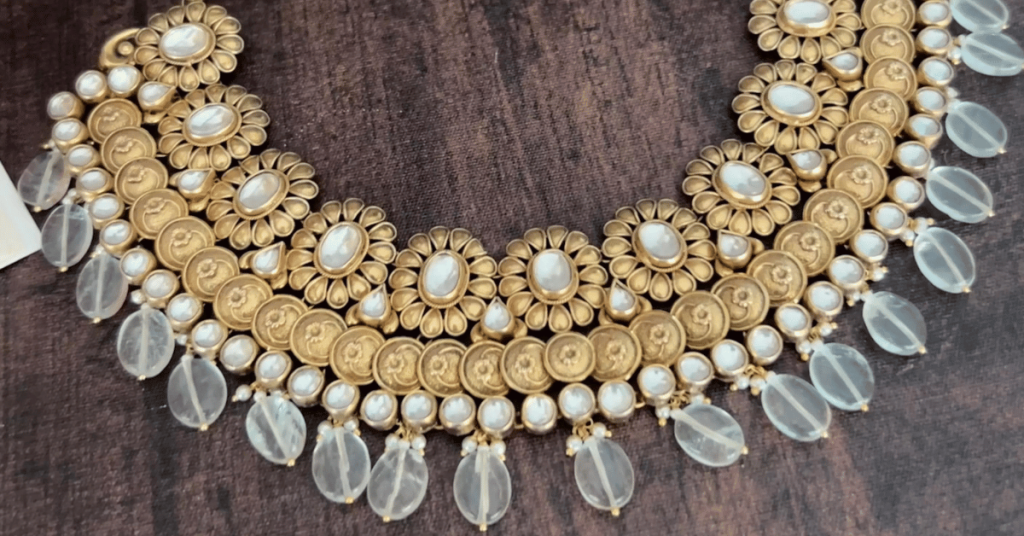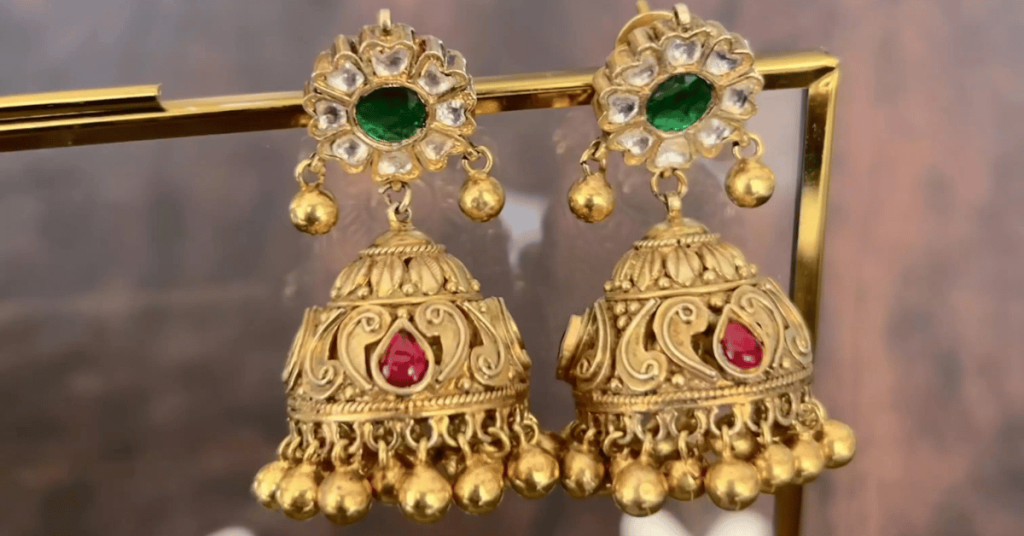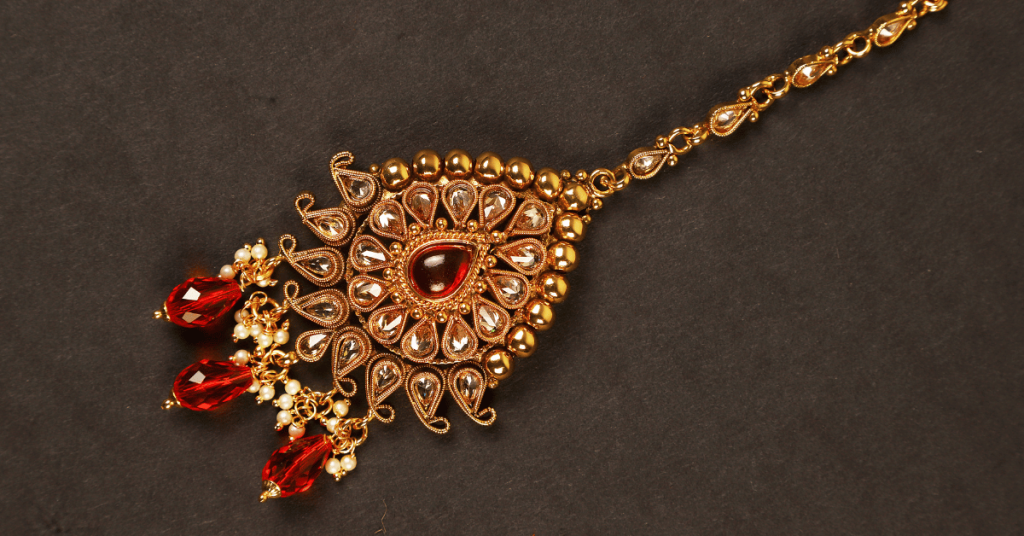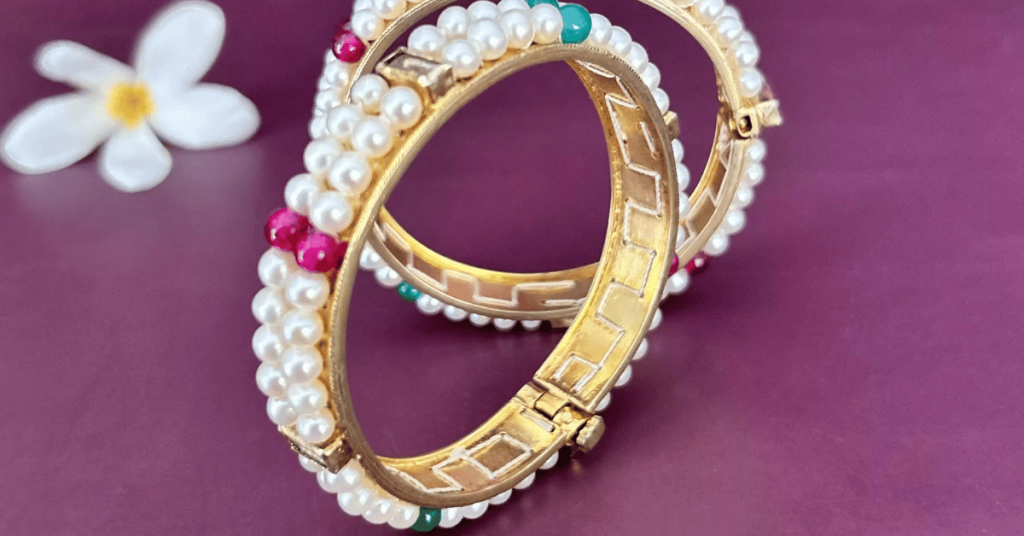Your cart is currently empty!
What is Kundan jewellery, and what are the different types?

Jewellery on the Indian subcontinent is as diverse as the people who live here; each region has its own unique customs, cuisine, clothing, history, and more. Jewels are an integral part of Indian culture, which is well-known for its endless festivities and extravagant weddings. Thus, the significance and value of Kundan jewellery have been passed down through generations and cultures and cannot be denied.
Despite its association with aesthetics and style, Kundan jewellery has, since ancient times, been an important part of many Indian cultures’ religious beliefs, rituals, and spiritual components, as well as their cultural and social diversity.
History of Kundan Jewellery
Kundan Jewellery has been around since the third century BCE. Its rise to fame began in the Rajasthan Royal Court and continued with the Mughal dynasty. The royal family were the only ones who could afford the time-consuming and labor-intensive technique of manufacturing traditional Kundan Jewellery with complex craftsmanship.
As time went on, artisans were able to successfully transform this Jewellery design into silver items, bringing them within reach of the common people. Due to its accessibility, more people on the subcontinent experimented with and enjoyed Kundan.
However, as commercialization became widespread, the quality of workmanship declined due to greater accessibility. Today, only carefully chosen artisans can guarantee genuine, high-quality craftsmanship.
How is Kundan Jewellery Made?
- Kundan is a fitting term for the procedure, as it involves encasing glass and gemstones in a base of a gold foil created of pure molten gold, and the name indicates enameling highly refined gold.
- In the fabrication process, the vibrant colors are enameled backwards, while the Kundan designs are front and center.
- Making this kind of Jewellery is a labor-intensive process that calls for extreme care and precision. In most cases, there are dedicated craftspeople for each procedure.
8 Steps in the Making of Kundan Jewellery
Step 1: In the first step, known as “Ghaat,” the framework is built.
Step 2: Then comes the “paid” process, in which the base is filled with lac or natural resin and sculpted according to the designs established by Kundan.
Step 3: The next step in the ‘Khudai’ process involves placing the framework with the uncut, shaped, polished gemstones.
Step 4: The next step is to apply more molten gold around the borders to make it look tidy and finished.
Step 5: The next step is meenakari,’ which entails filling the engraved design on the gold surface with a specific color’s enamel dust and then placing it in a fire to distribute the colors.
Step 6: After this step is done for every color, the pattern is etched onto it using ivory.
Step 7: The next step is to secure the jewels in place using gold foils, after which the processes of “Jada” and “pakai” are completed.
Step 8: The last step, known as “Chillai,” involves giving the diamonds a good polish.
Types of Kundan Jewellery
Any and all pieces of Jewellery needed for a bridal or special occasion set can be found in the Kundan Jewellery collection. Among the many types of Jewellery that fall under the umbrella of a Kundan design are the following:
Kundan Necklace
A necklace is one of the most versatile and ubiquitous pieces of Jewellery, appropriate for a wide range of formal and informal events. A beautifully designed Kundan necklace is the perfect finishing touch to any ensemble. On top of improving one’s overall look, dazzlingly adorn the neck. In addition, there is a wide selection of necklaces in all designs, sizes, and shapes available in the Kundan Jewellery assortment. Bridal apparel typically complements a broad, choker-like necklace with ample coverage.

Kundan Jhumkas
In addition to being an integral component of Jewellery, earrings are a show-stopping accessory in their own right. An opulent appearance can be achieved with just a pair of Kundan earrings—no neckpiece is necessary.

Kundan Matha Patti
As a hair ornament worn on the forehead, the Matha Patti is a traditional part of an Indian bride’s attire. Someone with a wider forehead might enhance their appearance by donning a Matha Patti.
Kundan Maang Tikka
It comes in a variety of sizes and shapes, making it a potential substitute for matha patti.It is not uncommon for maang tikas to have designs that match those of other Jewellery pieces.

Kundan Rani Haar
Raani Haar, an item of historical jewelry, was worn frequently by queens, as the name suggests. Wearing this style of neckpiece can make you look like a princess in no time. It has a pendant and is substantially longer and more majestic than the necklace. It has multiple layers. This striking piece of jewellery can stand on its own or be the cherry on top of the Indian bride’s bridal ensemble.
Kundan Bangles
It hardly goes without saying that Kundan bangles are extremely popular among Indian women; their quality is that exceptional. The garments gain an additional allure with the addition of these multicolored, elaborately crafted pieces of hanging Jewellery.

Hathphool
A hathphool, also known as a hand harness, is a type of Jewellery that is worn on the palm’s back. Like a ring bracelet, these begin at the fingers and go all the way up to the wrist. When worn with a matching set of rings, it becomes the most unique piece of Jewellery ever because it adorns the fingers.
Among the many varieties of Kundan Jewellery are nose rings, nose pins, anklets that clink, and so on.
Conclusion
Whether you’re dressing for a formal event or a more casual affair, Kundan jewellery will add the ideal finishing touch. These days, it’s all about investing in pieces that can be styled for several occasions. It is an investment that will never go out of style, will provide years of joy to its owner, and will never let them down.

